Biology
Arizona’s Predator Problem
by Jim Heffelfinger, Wildlife Biologist
Note: This article was first published in the Winter 1999 issue of Mule Deer magazine. People interested in reading more about southwestern deer should look for Jim’s upcoming book “Deer of the Southwest” due out in Spring of 2004.
Arizona deer hunters in the 1950s and early 1960s lived in what is commonly referred to as “the good old days.” Those who hunted at this time speak of deer behind every bush. Like all good things, this didn’t last; which is fortunate because deer habitat suffered in areas where deer populations were at destructively high levels. Arizona’s deer population declined in the late 1960s and early 1970s, which caused widespread concern among deer hunters. Deer populations recovered early in the 1980s only to again decline in the late 1980s to the present. White-tailed deer have weathered this last deer decline better than mule deer, which are now at their lowest level since the beginning of the deer permit system (1972).
Time and again, deer research conducted in Arizona has found that habitat conditions are what primarily drive deer populations up and down, with other factors like overgrazing, habitat changes, predation, poaching, and human encroachment playing secondary roles. The helplessness of this reality is very unsatisfying for those of us who want to “do something.” Like the last mule deer decline in the 1960s and early 1970s, the current decline has brought to the forefront a discussion of predators and their contribution to deer population dynamics.
When deer populations decline, predators become a focus of discussion because they clearly kill a considerable number of deer. In Arizona, mountain lions are the only consistent predators of adult deer, but coyotes and bobcats efficiently predate young fawns. There are 3 separate parts to the predator discussion: 1) do predators affect deer populations? 2) can we do anything about it? and 3) should we do anything about it? These 3 related, but distinctly different, questions are frequently asked as one — What are you going to do about the predator problem?
Do predators affect deer populations?
Predators eat a lot of deer; how can they not affect deer populations? Multiplying a statewide lion population estimate by the number of deer eaten annually by a single lion can be an alarming exercise. However, deer populations in Arizona fluctuate primarily in response to the condition of the habitat. Lion populations are controlled in a more sluggish way by prey (deer) densities and social interactions between other individual lions. Coyotes do not eat deer fawns year-round, so their populations vary in response to the density of other prey and food items, which are related to habitat conditions. Each predator/prey system is different; add an additional predator or prey species and you may have a completely different situation. Unfortunately, short-term predator studies provide only a quick snapshot of long-term relationships. The effects of lion predation in the same area may react differently from one decade to the next because of differing characteristics of the other predator populations, prey populations, and habitat conditions. This diversity of predator/prey relationships results in a myriad of information and opinions that fuel incredibly confusing discussions among biologists, hunters, and interested public.
Charles Elton did a great job expressing this complexity in his 1927 text book, Animal Ecology and Evolution:
“The balance of nature does not exist, and perhaps has never existed. The numbers of wild animals are constantly varying to a greater or lesser extent, and the variations are usually irregular in period and always irregular in amplitude. Each variation in the numbers of the species causes direct and indirect repercussions on the numbers of the others, and since many of the latter are themselves independently varying in numbers, the resultant confusion is remarkable.”
Getting to the point: do predators affect deer populations? The only truthful and honest answer is, “you bet they do.” How many deer we have depends on an interrelationship of many different factors which remove deer and affect the addition of deer to the population. Predators are one of the things that remove deer, but affecting deer populations is often confused with regulating them. Predators have been shown to accelerate deer declines caused by poor habitat quality and delay the recovery of deer populations after a decline. However, predators do not cause declines in deer populations or prevent their recovery; predation is not an over-riding deer population driver.
Harley Shaw, for example, studied mountain lions in central Arizona in the early 1970s during the depths of the last mule deer decline. He concluded that, at a reduced deer density, lions were a major source of mortality contributing to the low deer population, but that level of lion predation alone would not prevent the population from increasing.
Recently, several excellent long-term research projects have illuminated the relationships of lions and mule deer on both sides of Arizona. In California, researchers tracked deer populations for some 14 years and lion populations for 8 years. During that time, the deer population declined from a high of 5,500 in 1984 to fewer than 1,000 in 1990, presumably because of below average rainfall. The lion population also declined in response to the declining prey base, but the low point of the lion population was not reached until 4 years after the deer population “bottomed out.” During this lag time, lions may have exerted proportionately greater pressure on the remaining deer. Lion predation was the major cause of mortality, seriously impacted the deer herd. However, forage availability and quality subsequently improved with several years of normal rainfall and fewer deer on the range, and the deer population rebounded to about 2,100 in 1997.
In a long-term New Mexico study, lion predation did not impact a deer population that was stable or increasing during years of adequate rainfall. However, when the study area was hit with a multi-year drought, recruitment declined drastically and lion predation became the major cause of mortality for mule deer and accelerated a decline.
Can we do anything about it?
Whether predators affect deer populations is actually secondary to the question of whether we can do anything about it. Research in Arizona and Utah showed that when a lion was removed, the vacant territory was filled very quickly by other lions. Several mountain lion researchers have even theorized that a light to moderate removal of lions may actuallyincrease the density of lions in an area. Our knowledge of lion behavior and movements indicates that removing adult lions with large territories may result in more younger lions with smaller territories, as younger animals appear to be more tolerant of each other.
Coyotes are extremely resistant and resilient to population reduction. Computer modeling shows that they can sustain annual losses of anything less than 75% and maintain a long-term stable population by increasing their reproductive rate and moving in from surrounding areas. Clearly, removing predators from an area is not the same as reducing the predator population.
Deer populations generally peaked in the 1950s and declined in the 1960s. Predicides, such as 1080, were used extensively to control coyotes from 1947 to 1971. This is frequently used as evidence that deer populations are a function of predator populations; despite the fact that the deer decline started well before the use of poisons was curtailed. Moreover, deer populations recovered a few years later when climatic conditions improved again and went on to peak in the 1980s without the use of poisons. The use of poisons undoubtedly decreased predator populations in some areas, but it does not explain the statewide peak in deer numbers. Not so coincidentally, 1983 and 1984 were the 2nd and 3rd highest summer rainfall years on record, with the winters of 1982-83 and 1984-85 about 50% above normal.
The high deer populations of the 1980s are sometimes explained by the high fur prices at that time, causing more interest in harvesting predators. The harvest of predators and furbearers did increase significantly during that time, but how much that higher level of harvest contributed to the increasing deer populations is far from clear. Based on past deer research and management, it is much more likely that the series of very wet years during that time was the main factor driving the deer populations upward. Given what we know about the response in predator reproductive rates, it is unlikely this level of trapping (which occurs primarily in winter) significantly reduced the number of coyotes and bobcats at the time of the fawn drop (late summer, after the pups/kittens are born).
How has the statewide ban on leghold traps, initiated in 1993, affected predator populations? The number of predators taken in traps has declined precipitously, but hunt questionnaire data show that overall harvest (traps and hunter harvest) for coyotes, bobcats, and foxes has risen substantially. The total coyote harvest increased from 20,671 in 1992 (before the trapping ban) to levels ranging from 22,000 to 37,000 in the last 5 years since the ban. Many more coyotes are now being harvested annually than before the trapping ban, also, the deer decline started in the late 1980s. Thus, the lack of trapping does not appear to account for the most recent deer decline.
A 600-acre predator exclosure was established on the 3-Bar Wildlife Area as part of research to determine the causes of fawn mortality in mule deer. It was found that the survival of fawns was significantly higher inside the exclosure, where the deer were protected from predators. The protected deer population increased until it was over carrying capacity and started impacting the food available; at that point fawn survival decreased because of nutritional stress. Even though predators were responsible for a significant loss of fawns outside the exclosure, that part of the deer herd still increased by almost 40% from 1971 to 1976, illustrating the predators’ inability to keep deer populations from recovering when habitat conditions are favorable.
The Kaibab Plateau, rightly or wrongly, has always served as a predator-prey laboratory. An intensive predator control program implemented during 1905-31 resulted in 781 lions, 4,849 coyotes, 30 wolves, and 554 bobcats being removed. During these years, the deer population increased dramatically, peaking in 1928 before crashing to a level below the original population due to intensive overuse of forage and destruction of habitat. Concurrent with this removal of predators, however, was above average precipitation, a ban on doe hunts, and a dramatic reduction in livestock. There were reportedly 20,000 cattle and 200,000 sheep grazing the Kaibab deer habitat in 1889; by 1924, grazing pressure had been reduced to 4,000 cattle and 3,500 sheep. Massive predator control during this period undoubtedly contributed to this increase in the deer population, but it is difficult to separate the effects of decreased predation from the other changes occurring at that time.
Another intensive control effort on the North Kaibab took place in the 1950s using poisons to target coyotes. Another increase in the Kaibab deer population followed, until the deer herd was again destructively high and damaging important forage plants. Aldo Leopold, the father of modern wildlife management, once wrote regarding the Kaibab:
“A buck pulled down by a predator will be replaced in 3 years, deer habitat destroyed by too many deer may fail to replace itself in as many decades”.
Concerns over the effects of lion predation on the Kaibab herd following the last mule deer decline spurned a joint deer-lion study there in the late 1970s. Using radio-collars on both deer and lions, researchers documented a large decline in lion numbers on the Kaibab. Again, the deer population subsequently increased, although again it was during a wet period with abundant forage growth and following a reduction in livestock numbers. Deer populations throughout the state were also increasing in response to habitat improvement.
As part of a 15-year study in Utah, researchers reduced the mountain lion population by at least 50% yet saw no measurable difference in mule deer numbers nor the proportion of deer killed by lions. They concluded that the lion control made only a trivial contribution to the number of deer available to harvest during the hunting season.
Intensive coyote removal (usually with poisons) can increase deer populations if climatic conditions are good; data on the removal of lions is less compelling and depends on the intensity of removal. When a deer population is as high as the habitat can support, there is no room for more deer. In this case, any deer saved from predation is going to die from another mortality factor or cause the deer population to exceed the carrying capacity of the habitat — to the detriment of deer, habitat, and all deer enthusiasts. If a deer population is below carrying capacity, well-timed, intensive predator management may moderate a deer decline, accelerate a recovery, or even increase a population. The problem lies in effecting a significant reduction (in both intensity and area) in predator numbers using the methods currently available. Traps are no longer legal on public land, predicides are not registered for use anywhere, aerial gunning is not practical in much of the state’s brushy or forested mule deer habitat, and many areas are not suitable to predator hunting because of rough and remote terrain. More problematic is the uncertainty of future climatic conditions; are we increasing the deer populations at a time when the next few years will be dry and unable to support the increased number of deer?
Should we do anything about it?
We manage prey species, why don’t we manage predator species? In the early days of game management, predators were not managed — they were persecuted. Like the medical profession, the wildlife profession has learned a lot since those early days of bloodletting. Some say the lesson has been too deeply ingrained and predators have been placed on a pedestal as untouchable. Many people still recall the mass slaughters of yesteryear when the topic of predator management surfaces, and do not realize how common and prolific predators are.
The California Department of Fish and Game lost its ability to manage lions in 1971 as a result of public referendum. Ironically, so many problem lions are now killed by department personnel (at public expense), that the total annual lion removal is greater than when they were legally taken by hunters. Several years ago Alaska had researched-based information indicating that predator management could increase moose and caribou populations, yet a public outcry brought their plans to a screeching halt.
Some people claim that wildlife management agencies don’t want to admit there is a predator problem because predator management is not politically correct in today’s environment. Any agency that ignores the potential social implications of a predator management program stands to lose not only credibility with the public but the ability to maintain management authority over predatory species. There is a place for short-term predator management in cases of small, isolated populations which have been fragmented by human activities, such as pronghorn populations. However, predator management for the purpose of increasing deer populations over a large area in the long-term is not feasible. Localized programs do not make a difference from a statewide perspective and spend funds that could be better used for habitat projects.
The Utah study mentioned earlier showed that a 50% reduction in the lion population did not increase the deer population. A greater reduction in the lion population would be very difficult to achieve. If the deer population is not below the carrying capacity of the habitat, there is no room for more deer. This is also illustrated by the New Mexico lion study, where a reduction of more than 50% in the lion population was followed by a severe drought; the mule deer fawn recruitment and adult survival decreased drastically because of the reduced habitat carrying capacity. If lion population reduction were done in either of these cases for the purpose of deer management, it would not have been money well spent. The annual fluctuations of deer habitat carrying capacity in the Southwest add to the difficulty of prescribing predator management.
Predator-prey relationships are complicated and must be discussed on a case by case basis; sweeping generalizations about predation are guaranteed to be false in some areas at some times. Deer populations dynamics are not simply a matter of one factor determining how many deer we have, but instead are governed by an extremely complex interrelationship of many factors. Deer hunters and biologists must look realistically at the biological, logistical, and sociological issues surrounding predator management and consider, for each case, whether it is an effective, feasible, or intelligent way to manage deer populations.
Related Posts
One Comment
Leave a reply
You must be logged in to post a comment.
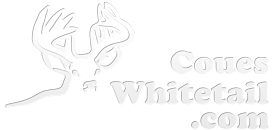


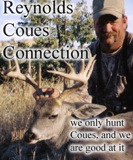











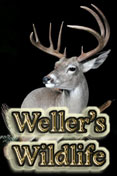



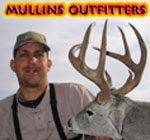


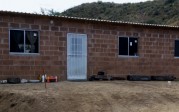
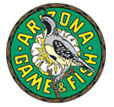
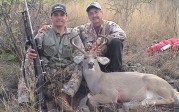
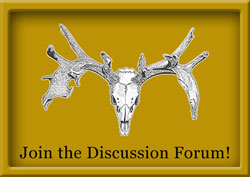















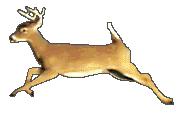
PhxArcher87April 28, 2015 at 12:03 pm
Cattle and donkeys do more damage to native species than coyotes.
https://www.youtube.com/watch?v=vpTHi7O66pI